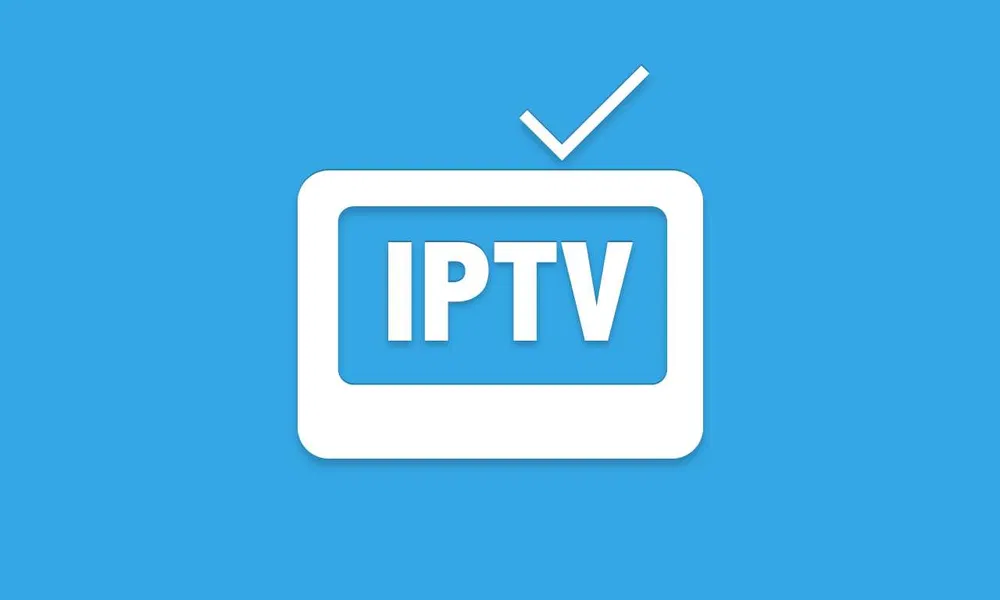In the current digital landscape, IPTV Encoder play a vital role in the seamless delivery of high-definition content. Whether one is a content creator aiming to broadcast shows or a viewer seeking to enhance the streaming experience, it is essential to comprehend what an IPTV encoder is and how it operates. This article delves into the benefits of utilizing these devices, such as encoded outputs and compatibility frequency, provides a step-by-step guide for their setup, and offers insights on selecting the most appropriate encoder based on individual requirements. By engaging with this content, readers can unlock the potential of streaming HD content from virtually anywhere while also benefiting from cost savings and increased flexibility.
Key Takeaways:
- Easily stream HD content anywhere with an IPTV Encoder from StaticIPTV.us, allowing for flexible viewing options no matter your location.
- Save on costs and enjoy the flexibility of an IPTV Encoder, with easy setup and top brands and models to choose from.
- Choose the right IPTV Encoder by considering factors like budget and features, including technologies like MPEG-2 and ASI, and explore top brands and models recommended by StaticIPTV.us.
What is an IPTV Encoder?
An IPTV encoder is a sophisticated technological device that converts digital media into formats appropriate for streaming over Internet Protocol (IP) networks.
Devices like the Blonder Tongue HDE-CSV-QAM/IP serve a vital function in the broadcasting of high-definition (HD) programs by processing video signals from various sources, including HD-SDI and HDMI outputs.
These encoders support multiple encoding formats, such as MPEG-2 and can handle sub channels, and are capable of handling unencrypted signals, thereby positioning themselves as essential components in contemporary IPTV systems.
Explanation of IPTV and its Functions
IPTV, or Internet Protocol Television, pertains to the delivery of television content through Internet Protocol networks, which enables users to stream digital broadcasts efficiently and in real-time. This technology revolutionizes traditional broadcasting methods by transmitting video signals via QAM (Quadrature Amplitude Modulation) or ASI (Asynchronous Serial Interface), thereby facilitating the seamless streaming of high-definition programs across various devices.
In contrast to conventional cable and satellite systems that depend on physical infrastructure, IPTV utilizes the internet to offer users video on demand content, thus providing greater flexibility and accessibility.
A critical component of this technology involves the use of encoders, which convert the original video source into a digital format appropriate for transmission. This conversion is vital for ensuring that the content is delivered smoothly and without interruption.
Furthermore, employing unencrypted signals simplifies access for viewers, as it eliminates barriers that may restrict programming availability, and supports simultaneous inputs such as HDMI and VGA. This significant shift not only enhances the user experience but also promotes a landscape in which personalized and diverse viewing options can flourish.
Popular posts
- IBO TV Player Activation 101: Everything You Need to Know
- IPTV in the US: A Closer Look at the Cutting-Edge Technology
- How to become an IPTV provider US: Start your Business
- StaticIPTV Reviews: The Real Deal | StaticIPTV.us
- Troubleshooting IPTV Smarters Pro Lagging: Expert Solutions
- Best IPTV Service Providers in the USA
- Best IPTV with No Buffering
Benefits of Using an IPTV Encoder
Utilizing an IPTV encoder offers several advantages, including the ability to stream high-definition content from virtually any location, cost savings in comparison to traditional broadcasting methods, and versatility regarding input and output formats.
Recent technological advancements have enhanced IPTV encoders, enabling improved remote management and compatibility with various input sources. This ensures that broadcasters can provide high-quality programming tailored to the specific needs of their audience.
Streaming HD Content Anywhere
The streaming of HD content is significantly enhanced through the utilization of an IPTV encoder, which facilitates high-quality transmission over networks like 100/1000Base-T Ethernet, thereby ensuring that users can access their preferred programs at any time and from any location.
This technology capitalizes on high-speed connections, such as Ethernet, to efficiently deliver uncompressed video signals, thereby making the remote management of content streaming considerably more effective.
With these capabilities, users experience seamless viewing without the lag and buffering issues typically associated with slower connections. For example, an IPTV encoder can dynamically adjust to varying bandwidth conditions, ensuring uninterrupted playback of live sports events or the latest television shows.
Furthermore, remote management tools give the power to service providers to monitor and optimize content delivery in real time, enabling them to promptly address any potential issues and enhance overall service quality. Consequently, viewers not only gain access to a wide array of programming options but also enjoy superior streaming reliability.
Cost Savings and Flexibility
One of the primary advantages of utilizing an IPTV encoder is the cost savings it provides for broadcasters, along with unparalleled flexibility in managing high-definition programs across various platforms and formats.
By leveraging advanced technologies, these encoders minimize the necessity for extensive hardware setups, allowing broadcasters to streamline their operations, accept various inputs such as Component, HDMI, and Composite, and invest in diverse input and output configurations.
This approach leads to significant reductions in operational expenditures, enabling the reallocation of funds to other critical areas such as content creation and marketing.
The flexibility of IPTV encoders allows users to easily adapt programming to accommodate various streaming formats, including sub channels and output level configurations, thereby catering to different audience preferences without incurring substantial costs.

Step-by-Step Guide for Setting Up and Using an IPTV Encoder
To effectively set up and utilize an IPTV encoder, it is essential to follow a comprehensive step-by-step guide that addresses everything from initial connections like freq agile QAM RF to advanced configurations for streaming HD programs.
The process begins with selecting a suitable model, such as the Blonder Tongue HDE-CSV-QAM/IP, and connecting it to the appropriate video sources using various inputs, including HDMI, HD-SDI, and Composite.
Subsequently, it is important to ensure that the encoder’s outputs are in alignment with the chosen distribution methodology, whether utilizing RTMP for online streaming or traditional multicast protocols for local networks. Each connection plays a critical role, as it influences the quality and reliability of the transmitted stream.
Next, configure the encoder settings, including bit rates, resolution, and protocol specifications, to accommodate the bandwidth capabilities of your viewing audience. It is imperative to make the correct adjustments, as these settings will significantly impact the overall streaming experience by minimizing buffering and enhancing video clarity.
Utilizing the manufacturer’s software or web interface facilitates a user-friendly setup process, ensuring seamless integration with the existing infrastructure.
Choosing the Right IPTV Encoder
Selecting the appropriate IPTV encoder is essential for achieving optimal performance in streaming high-definition content. This process requires careful consideration of several factors, including technological capabilities, brand reputation, and output configurations.
It is advisable to seek encoders that support a variety of input options, such as HDMI, HD-SDI, and Composite, while also complying with industry standards for output formats. This approach will ensure seamless integration with your existing broadcasting system.
Factors to Consider when Selecting an IPTV Encoder
When selecting an IPTV encoder, several critical factors must be considered, such as the frequency range, as they can significantly impact streaming quality and overall broadcasting efficiency.
Key considerations include the types of inputs available, such as HDMI and HD-SDI, the supported output formats, and the technology’s capability to handle HD programming without compromising quality.
Along with these technical specifications, input/output versatility is of paramount importance. An encoder that accommodates a range of input options offers greater flexibility, allowing users to connect various devices seamlessly.
Encoding efficiency is also crucial; a high-performance encoder ensures minimal latency and optimal bitrate management, which significantly affects the viewer’s experience.
Furthermore, brand reputation should not be overlooked, as established brands typically provide superior customer support and reliable performance.
Finally, the price is an essential consideration, as it must align with the budget while still meeting necessary requirements and delivering adequate value.
Top Brands and Models to Consider
When searching for an IPTV encoder, it is advisable to consider some of the leading brands and models in the market, including Blonder Tongue. The HDE-CSV-QAM/IP model from Blonder Tongue is particularly noted for its exceptional streaming capabilities. These brands are recognized for their reliability, advanced technology, and robust performance in managing various HD programs and outputs, utilizing Component, HD-SDI, HDMI, and VGA connections.
Along with Blonder Tongue, prominent competitors in the IPTV encoder market include Harmonic and Telestream, both of which offer state-of-the-art solutions tailored to meet diverse broadcasting requirements. Harmonic’s VOS360 is distinguished by its remarkable adaptability in cloud environments, facilitating seamless scaling and flexibility to accommodate varying content delivery demands, using MPEG-2 and QAM standards.
Conversely, Telestream’s Vantage provides an impressive array of features that emphasize transcoding efficiency and user-friendly interfaces.
These varied options ensure that organizations, regardless of size, can find encoders that not only integrate effectively into their existing workflows but also enhance the overall viewing experience for end-users.
Recent Posts
- Which IPTV services have apps compatible with major streaming devices? | StaticIPTV.us
- What IPTV subscription plans allow pausing and rewinding live TV? | StaticIPTV.us
- Which IPTV providers include access to popular live news channels? | StaticIPTV.us
- Where can I subscribe to IPTV services that support high-definition streaming? | StaticIPTV.us
- What IPTV services offer easy integration with smart TVs? | StaticIPTV.us
- Which IPTV subscription plans include cloud DVR features? | StaticIPTV.us
- What IPTV providers have the fastest customer support response? | StaticIPTV.us
Frequently Asked Questions
What is an IPTV Encoder?
An IPTV Encoder is a device used to convert live video and audio streams into digital format for distribution over an Internet Protocol (IP) network. It allows for the streaming of high-quality HD content to any location with an internet connection, offering combined outputs and supporting frequency standards.
How does an IPTV Encoder work?
An IPTV Encoder takes in a live video and audio signal from a source, such as a camera or video player, and digitizes it into a format that can be transmitted over an IP network. The encoded stream is then distributed to viewers over the internet via IP and 100/1000Base-T Ethernet connections, allowing them to watch the content in real-time.
What are the benefits of using an IPTV Encoder?
An IPTV Encoder offers numerous benefits, including the ability to stream HD content to any location with an internet connection, live broadcasting capabilities, and the ability to reach a larger audience through online distribution. It also allows for easy integration with other systems and devices, making it a versatile and cost-effective solution for video streaming.
How can I use an IPTV Encoder for my business?
An IPTV Encoder can be used for a variety of business applications, such as live events, video conferencing, and online training. It is also a great tool for businesses that want to expand their reach and offer high-quality video content to their customers or employees.
What is the difference between a hardware and software IPTV Encoder?
A hardware IPTV Encoder is a physical device that is used to encode video and audio streams, while a software IPTV Encoder is a program or application that can be installed on a computer or server. Both options have their own advantages, such as physical objects for hardware and numerical values for software, and the choice will depend on the specific needs and requirements of the user.
Where can I find a reliable IPTV Encoder provider that accepts ASI and IP inputs?
StaticIPTV.us is a highly reputable IPTV Encoder provider that offers high-quality equipment and expert support for all your video streaming needs. With a wide range of options and excellent customer service, StaticIPTV.us is a top choice for businesses and individuals looking to stream HD content anywhere, using QAM RF and CATV frequency ranges of 5-1002 MHz.
